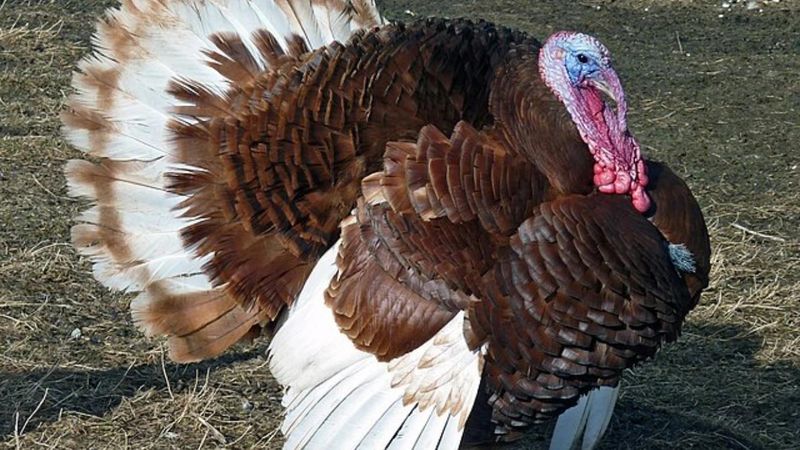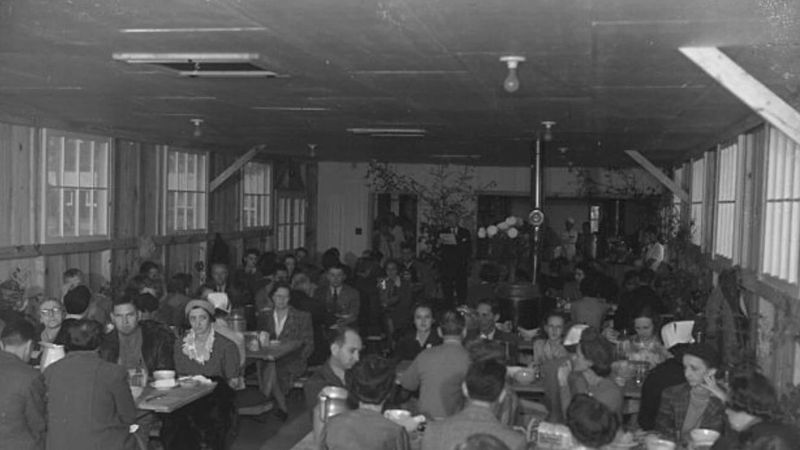WORLD WAR 2 THANKSGIVING: FRONTLINE TRADITIONS OF GRATITUDE

Getting together with loved ones to give thanks, carve turkeys, and watch football are American traditions millions take part in each November. However, during World War 2, Thanksgiving looked a little different. While stateside, many families had to make do with what they could, the military did work to provide troops with traditional Thanksgiving fare. There was even a unique experience sharing American traditions in Europe that still exists in some form to this day. Thanksgiving during World War 2 was different, but the spirit of the holiday lived on.
World War 2 Thanksgiving Traditions: Perseverance Amidst War
It’s undeniable that the destruction WW2 brought made it difficult for many to be thankful, and yet, during World War 2, Thanksgiving found its way into American homes and on the front lines.
There were several notable differences, with traditions, gatherings, and even the meals Americans typically indulge in being affected. Here’s how things looked for troops and civilians alike:

Tom Turkey for Troops
During WW2, the U.S. military prioritized serving traditional Thanksgiving meals to troops worldwide, as a way to boost morale amid unthinkable conditions.
Traditional turkeys and all of the trimmings were delivered to the front lines, ensuring a hot holiday meal for all.
Notably, Sailors, who were benefiting from the Navy’s comparably excellent food, enjoyed an even more lavish feast for the holidays, with impressive spreads offering everything from specialty drinks, to cigars, and even pumpkin pie!
Rationing Stateside
The first World War 2 Thanksgiving in 1942 would find a very important ingredient facing rations—sugar.
Used in a variety of dishes that reach well beyond just the great desserts enjoyed by families, this was a major concern for Americans at the time.
As if that wasn’t bad enough, shortages of meat, butter, and spices posed even more challenges for holiday meals.
By 1943, rationing only got worse and expanded to include meat, cheese, fats, and canned goods, forcing creative substitutions from savvy American families.
While poultry wasn’t rationed, turkey was scarce as most went overseas for troops—for example, the Navy’s multi-course turkey meals.
Family gatherings, though smaller due to travel restrictions and absent servicemen, remained deeply cherished despite the hardships.
Part of the reason traveling was stifled came down to the rubber shortage and the social pressure of conserving tires for the war effort.

Impact of World War 2 on Thanksgiving Traditions
Because most rubber was coming from regions controlled by Imperial Japan during WWII, shortages hit hard, with 92% of the U.S. supply affected.
How does this come into play for Thanksgiving traditions?
On November 13, 1942, Macy's shredded their iconic parade balloons, including Superman, for scrap rubber and ended up canceling the parade until 1945 to help troops fighting throughout the world.
Thanksgiving football also suffered as the draft depleted teams both on a collegiate and professional level. Many, like the Detroit Lions and Cleveland Rams, suspended operations.
Interestingly enough, rosters were so thin, that some NFL franchises had to get creative.
In 1943, the Philadelphia Eagles and Pittsburgh Steelers merged temporarily as the "Steagles” to continue operations amid a player shortage.

Thanksgiving Day 1944: Frontline Celebrations During World War 2
When American troops went throughout the world to take on the Axis, they brought with them the culture of the United States.
As a result, there were interesting moments in which Americans and others got to know each other like never before.
During World War 2, a Thanksgiving in Luxembourg would present a very unique exchange between locals and the Army National Guard’s 28th Infantry Division.
In November 1944, Luxembourg was home to many American fighters, enjoying local hospitality and refuge from the brutal war around them.
The 28th Infantry Division would find themselves in the country after losing many men in the Hürtgen Forest.
Despite language barriers, Soldiers and villagers bonded by sharing food, visiting each others' homes, and helping each other during a hard time.
U.S. troops taught locals how to play baseball, locals listened to American music, and GIs shared rations like Spam and Hershey bars, much to the delight of the community.
While the front lines remained mostly quiet, occasional enemy artillery fire and patrol clashes reminded everyone of the war’s ongoing dangers.
However, Thanksgiving brought a slice of Americana to Luxembourg, with field kitchens cooking traditional dinners—the aroma of roasted turkeys was enough to attract curious, hungry families.
Troops and locals enjoyed shows, movies, and USO events, building friendships and sharing stories despite language barriers—a bright moment in wartime Europe.
Sadly, the Battle of the Bulge would decimate Luxembourg and cause heavy casualties among U.S. troops in December, but despite the war’s devastation, the country adopted American Thanksgiving traditions post-war, often substituting goose for turkey in local celebrations.
In the 1970s, supermarkets made it easier for Luxembourgers to enjoy traditional Thanksgiving foods like cranberry sauce.
Today, the holiday is still celebrated in Luxembourg, especially by American expats, thanks to the special connection formed in 1944 during the war.
Even during World War II, people found ways to show gratitude, share love, and make the best of tough times on Thanksgiving and beyond.
Related reads:
BY BUDDY BLOUIN
Buddy Blouin is a Contributing Writer at VeteranLife.com
Buddy Blouin is a Contributing Writer at VeteranLife.com



